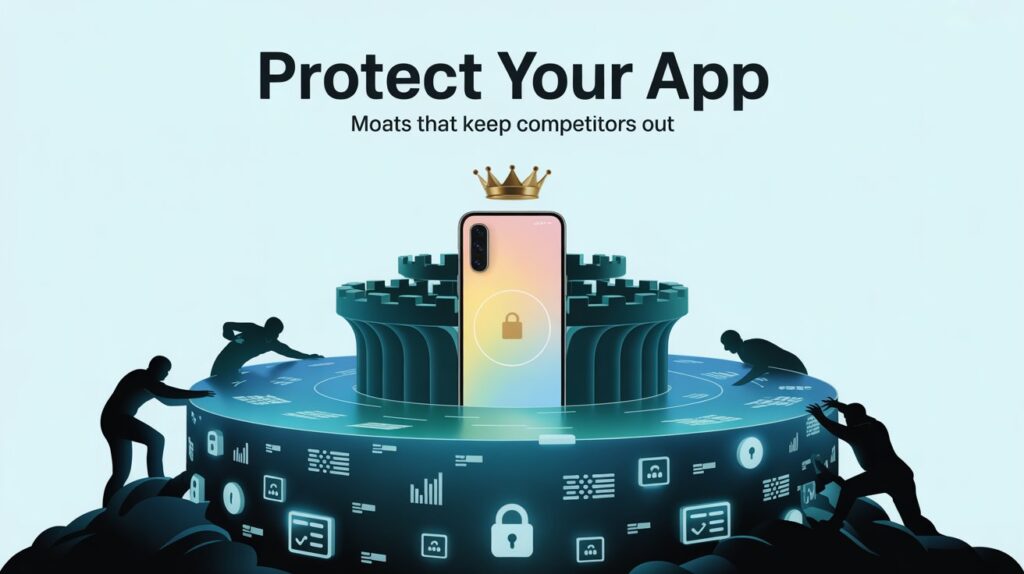In the gold rush of the app economy, many founders are fixated on a single element: the app itself. They obsess over features, UI/UX, and the elegance of their code. While a high-quality product is essential, it is no longer enough. In a world where technology can be replicated with increasing ease, your code is not your fortress. Your long-term success hinges on building a deep, defensible “moat” around your business, a sustainable competitive advantage that makes it difficult for others to challenge your market position, even if they have a bigger budget.
A moat is not a feature but a fundamental aspect of your business model. Relying on being first to market or having a slicker design is a fragile strategy. Competitors will emerge, and they will iterate faster. Instead, you must build a business that becomes stronger and more valuable as it grows. There are several key types of moats that mobile app startups can construct.
- Network Effects: This is the most powerful moat of all. A product with network effects becomes more valuable to each user as more users join. Think of social media platforms like Instagram or communication tools like WhatsApp. A new user joins because their friends are already there. This creates a virtuous cycle that is incredibly difficult for a new competitor to break into. For your app, consider how you can bake in mechanics that encourage user-to-user interaction and value creation.
- Proprietary Data: If your app can collect and leverage unique data to improve the user experience, you can create a powerful moat. For example, a navigation app that gathers real-time traffic data from its users can provide more accurate routes than a competitor without that data asset. Over time, the sheer volume and history of your data can create a significant barrier to entry. Ensure your app is not just a passive tool, but an active learner from user behavior.
- High Switching Costs: How difficult would it be for a user to leave your app for a competitor? Switching costs aren’t just financial, they can be procedural or emotional. If a user has invested significant time setting up their profile, integrating your app into their workflows, or has a historical archive of data within your ecosystem, the friction of starting over elsewhere can be a powerful retention tool.
- Intangible Assets (Brand): Never underestimate the power of a strong brand. A brand is more than a logo, it’s the sum of all interactions and the emotional connection a user has with your product. A brand that stands for trust, quality, or a specific lifestyle can command loyalty that transcends features. This is built through consistent messaging, excellent customer service, and by creating a genuine community around your app.
Building these moats is not an afterthought, but it should be woven into the fabric of your business strategy from day one. When you are conceptualizing your app, don’t just ask “What will it do?” Ask “How will it become indispensable?” This strategic thinking should inform your technical decisions. Partnering with experienced custom mobile app development services can be instrumental here. A savvy development partner will not only build your app but will also help you design an architecture that supports the creation of a moat. They can advise on the best ways to capture and leverage data, build features that encourage network effects, and ensure the user experience is sticky enough to create high switching costs. The code is the vessel, but the moat is what protects your treasure.

